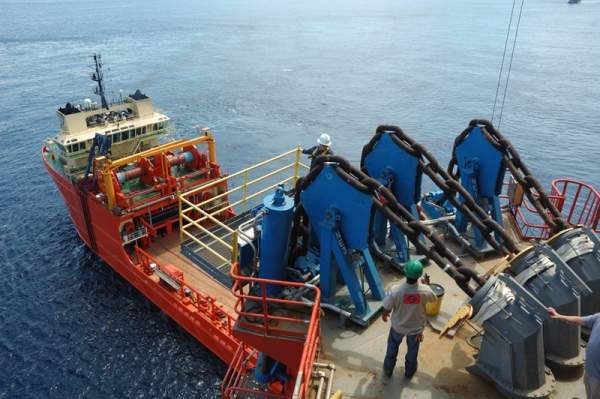The Who Dat oil and gas field is located in Mississippi Canyon (MC) blocks 503 / 504 / 547 in the Gulf of Mexico (GOM) in water depths of 945m.
The field has an estimated life of 30 years.
LLOG Exploration is the operator of the field and currently holds a 67.5% working interest in the development.
First production from the field was achieved in December 2011.
Discovery and geology of the Who Dat oil and gas field
The Who Dat field was discovered in December 2007 by the OCS-G 27277 Well A1 in the MC block 504. The well was drilled by Diamond Offshore’s Ocean Victory semisubmersible drilling rig.
An additional two wells were drilled in 2010 to further appraise the field by the Noble Lorris Bouzigard and Noble Amos Runner semisubmersible rigs. The additional wells expanded the field into blocks 503 and 547.
The Who Dat field is made up of ten stacked reservoirs of the Pliocene and Upper Miocene age. Its reservoirs are located at a depth of 10,000ft-17,000ft, with pressures ranging between 6,000psi and 12,500psi.
The three wells drilled at the field encountered more than 700ft of net pay in the reservoirs. The wells flowed at the rate of 10,000 barrels a day of oil and 60 million cubic feet a day of non-associated gas.
Oil and gas reserves at the Gulf of Mexico-based field
The Who Dat field is estimated to contain between 100 and 300 million barrels of oil equivalent, comprising 70% oil.
The oil and gas reserves located at the field are noted to have low amounts of wax and no asphaltene flocculation.
Field development using the Opti-Ex floating production system (FPS)
The field was developed using a semi-submersible Opti-Ex floating production system (FPS). The wells drilled at the field are connected to the Opti-Ex FPS with the help of flexible risers.
Who Dat’s subsea system is capable of handling up to 12 wells.
The OPTI-EX FPS was acquired by LLOG to carry out the operations at the field. It has a production capacity of 60,000 barrels of oil a day (bopd), 150 million standard cubic feet of gas a day (mmscfd) and 40,000 barrels of water a day (bwpd).
The facility was installed at the field in July 2011 and has been specifically designed to operate in the Gulf Of Mexico at a cost of $400m. The FPS is designed to withstand a 1,000-year storm.
The OPTI-EX FPS is held onto the seafloor by 12 mooring lines connected to 80ft suction pile anchors. Its hull is equipped with a deep draft ring-pontoon.
The FPS features a flexible design and is able to be modified and used at other fields.
Subsea systems and exportation
The subsea system for the field includes ten miles of 6in-diameter flowlines, along with six risers, nine jumpers and jumper tie-ins, three manifolds and other equipment.
Oil produced at the field is transported through a 19-mile long, 14in-diameter export oil pipeline, which connects to the Mars pipeline system.
The pipeline carries the oil to Shell production facilities onshore where it is subsequently processed.
The gas is exported via a 17-mile-long, 10in-diameter gas pipeline, which connects with the Independence Trail pipeline operated by Enterprise Field Services.
A new 2MW, 10ksi multiphase pumping station is planned to be installed at the field in order to optimise the high gas content.
The new multiphase pumping system will include a manifold, umbilical termination assembly, power umbilical, jumper and topside control equipment.
Contracts awarded to international companies
Exmar Offshore Company was responsible for designing, constructing and installing the OPTI-EX FPS.
Mustang Engineering was contracted to carry out pre-front-end engineering design (FEED) and FEED studies, as well as detailed engineering and design works, procurement services and vendor inspections for the topsides of the FPS.
Samsung Heavy Industries constructed the hull of the FPS in South Korea, while its topsides were fabricated by Kiewit Offshore Services in Texas.
Dockwise was contracted by Exmar to transport the FPS hull from South Korea to Texas for integration with the topsides.
Delmar was contracted to provide engineering, design, fabrication and installation services for the mooring system of the OPTI-EX FPS.
Baker Hughes provided drilling and well completion services for the development.
LLOG contracted Expro to provide subsea and slickline services for the field.
FMC Technologies was awarded a $40m contract to supply seven subsea production trees and control systems for the project.
Global Industries was contracted to install the oil and gas pipelines, risers, flow-lines, manifolds and other equipment of the subsea production system.
TechnipFMC has been awarded the integrated engineering, procurement, construction and installation contract to provide a multiphase pumping system for the field.










